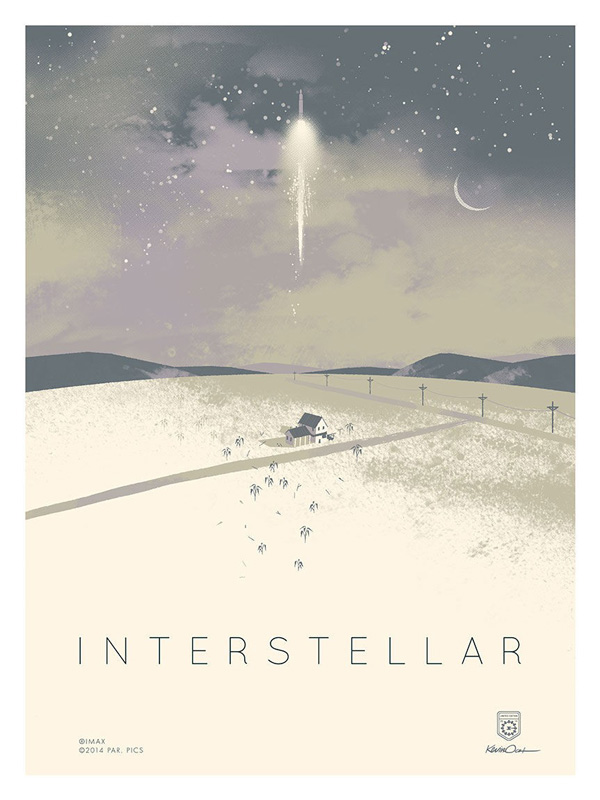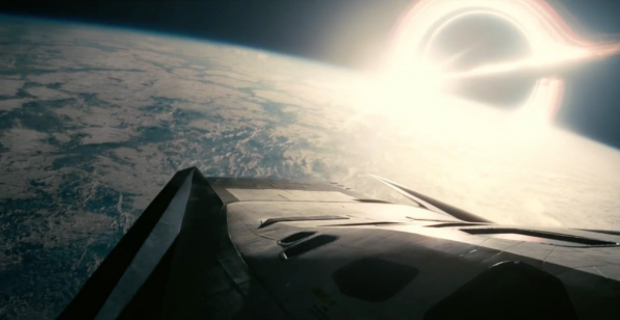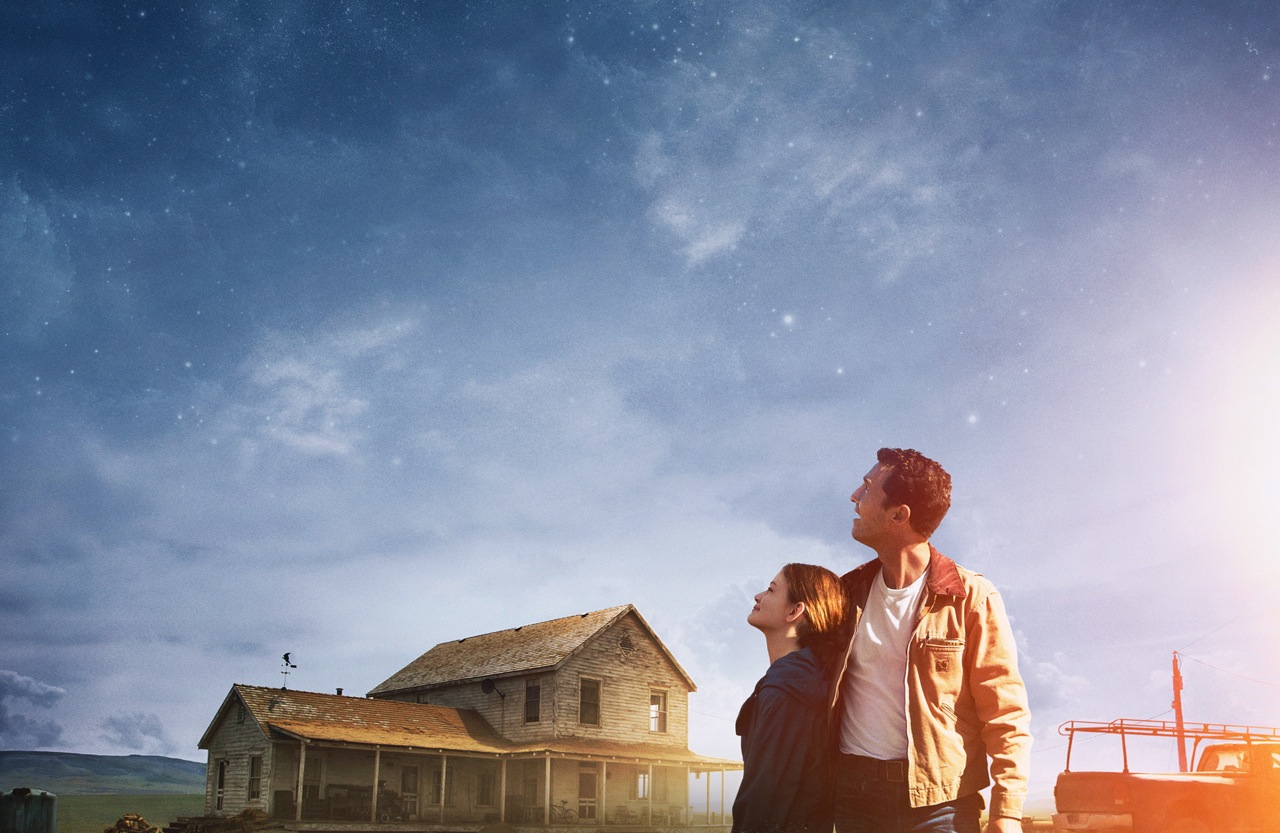2014 is almost over. Like everyone else in the world, I’m looking back at the things I accomplished this year — and the much longer list of things I didn’t, and there’s one thing in particular that stands out; one egregious omission from my “Done That” list…
I never wrote about Interstellar.

Y’see, Interstellar was a pretty important movie to me. It touched on a lot of things, both creatively and philosophically, that I hold very dear. From the moment I left the theater, I was formulating the review I’d write for it in my head… but, as so often happens, I got distracted. By life, responsibilities; the usual. And at the height of that distraction, I made one fatal error:
I started reading other people’s reviews.
Nothing kills your critical thought process faster than flooding it with the opinions of others. Now, over a month later, almost everything I might have said about the movie has already been said. It had its share of positive and negative reviews (with the negatives sometimes missing the point entirely). People wrote about the astonishing use of practical FX; the misguided audio choices; the scientific breakthrough the movie accidentally spawned; the surprise cameo. And of course, much-deserved praise was heaped upon Hans Zimmer’s unconventional, Philip-Glassian score.
The reviews have all been written, but I couldn’t let the year end without shining a spotlight on Interstellar one more time. Call it a sort of New Years resolution; a way for me to express what I feel most optimistic and impassioned about for the coming year — or years.
Beyond this point, things get… sciencey.
Whatever Can Happen, Will Happen
To explain why Interstellar is so important to me, you first need to understand where my head has been for some time now. Namely: in space.
I can’t pinpoint the exact moment when it happened, but some time in the last two or three years, I started really caring about space. And I mean REALLY caring. Signing-petitions-and-writing-to-my-local-senator caring. I don’t even really remember the pathway that brought me there, but if I had to guess, I’m pretty sure it had something to do with this video:
That’s Neil deGrasse Tyson, astrophysicist, educator, director of the Rose Center for Earth and Space (also known as the Hayden Planetarium) in New York. I’d heard his name tossed around many times before, mentioned on message boards and websites like io9, but I never really paid attention to the dude until that video.
Because that… ^ …is beautiful.
That is poetry.
It doesn’t even need the music to have the same effect — here he is elaborating on those same thoughts:
For me to become a fan of space, I first had to become a fan of Dr. Tyson. And boy, did I. Here’s a man who speaks with passion, with verve, about subjects the common person couldn’t find more boring… that is, until they hear him speak. This man single handedly ignited an all new passion within me, just with the power of his words.
When someone like that speaks about the failings of American culture, our lack of ambition, our shortsightedness, the loss of our dreams, and why those dreams are so important… you listen. You learn. Hopefully, you act. And after hours of watching him use those words to capture minds and hearts, I wanted to know who was responding. Who was making moves. Who was taking action.
The answer came in the form of this article about engineer, entrepreneur, and founder of SpaceX, Elon Musk:
Exodus
Elon Musk argues that we must put a million people on Mars if we are to ensure that humanity has a future.
Here was my man of action. If Dr. Tyson inspired me to dream, Musk’s work, not only in the space industry but in the clean energy and automobile industries as well, inspired me to hope. This altruistic billionaire not only held staunchly to the belief that mankind’s future was among the stars, but was practically dedicating his life to getting us there.
How cool is that??
What started as idle musing had become a full blown obsession. I’m now fully committed to the future these men envision. I want to live in a world where the universe is open to us; where stories that take place on another planet are contemporary fiction, not sci-fi. I want to see this in my lifetime.
Impossible but Necessary
Of course, until then, I’m happy to settle for science fiction. And at the height of this obsession, along comes a movie from probably my favorite director that endeavors to use real science, real theories, to tell a story about humanity’s future colonizing other worlds.
It had me at hello.
That the movie we got was actually as ambitious, groundbreaking, and resonant within its own industry as the events transpiring in its fictional world, makes it even more remarkable.
(hell, I guess I am going to repeat some of the stuff that’s already been said)
They don’t make movies like this anymore.
Miniatures; rear projection; location shooting; NO green screen; music, action, and visuals dominating over dialogue. Not since — and this will sound weird, but hear me out — not since the original 1982 Conan the Barbarian has a movie felt so operatic, so textured. In every other way, these two movies are nothing alike, but the way Interstellar leans into its music and speaks directly to your heart and your gut, even as its story challenges your mind — the ONLY movie I was left thinking about when I left the theater was John Millius’s Conan.
That’s why Interstellar is my favorite movie of 2014. It made me feel things other movies don’t often make me feel, and it told a story other movies haven’t really told. It’s not just my favorite of the year, it’s one of my favorites of all time.
But why is it important?
Couple reasons.
FIRST
Every time a non-franchise, non-sequel, non-reboot, non-adaptation movie is made on this scale, with this level of creative and technical ambition, it’s important. To both the film community and the film industry. Because, again, they don’t make movies like this anymore. That Nolan had the clout to attempt something like this, and then to make it something audiences responded to? That’s important.
SECOND
Take a look at Inception.
That movie managed to teach a clueless audience the twisty internal logic of dream sharing, dreams within dreams, and the plausible but ultimately fictional concept of dreamtime. It blew people’s minds, even confused some of them, and they came back for more. It was a huge success; an original science fiction story (see my first point) that deftly educated viewers about the complex rules of its world. You didn’t have to understand why things worked the way they worked, just that they did work.
In Interstellar, Nolan is taking that same knack for educational storytelling and applying it to REAL scientific laws, theories, and concepts. The fictional portal of dream sharing is replaced by the exciting reality of black holes; the nebulous concept of dreams within dreams, replaced by the nebulous reality of wormholes; the clever conceit of dreamtime, replaced by the all too real and imminent obstacle of time dilation. Even the deeper speculations on limbo are replaced by scientific theories on higher planes of existence.
Nolan is showing the audience these things — not science fiction, but science fact — embedded in an epic, cathartic, challenging, but accessible narrative. He is educating his audience as he entertains them. And what is he teaching them? Look up. Look forward. Look what we can attain if only we try. Or, as the movie’s poster slogans put it…
“Mankind Was Born On Earth. It Was Never Meant To Die Here”
“The End Of Earth Will Not Be The End Of Us.”
“Mankind’s Next Step Will Be Our Greatest.”
“Go Further.”
No Time For Caution
If you need to wonder why that message is so important, consider the perpetually dwindling investment in America’s space program by our government. Or better yet, let Neil deGrasse Tyson explain it to you:
“The focus should be down here, not up there,” says a doomed humanity in the movie, echoing the sentiments of far too many people in the real world. Meanwhile, educators like Dr. Tyson and Bill Nye (that Science Guy) struggle to enlighten and reinvest the public in space as a lucrative path to enhancing our culture, and Elon Musk and the stalwarts at NASA continue to push forward our ability to engage with that future.
We need to reignite the public’s imagination at the possibilities of a spacefaring future, and Christopher Nolan, his brother Jonathan, and astrophysicist (and the film’s executive producer and scientific consultant) Kip Thorne are doing their part by crafting a piece of highly-visible entertainment which tells us about our attainable future; that shows us what it might look like.
What does Dr. Tyson want? He wants to double NASA’s budget (to a full penny on the Tax dollar — think about that) and build a fleet of multi-purpose spacefaring vehicles, opening up a broad range of possibilities for space travel rather than a single, narrow purpose, like going to Mars or the Moon.
Musk’s focus isn’t nearly as broad, but then, it doesn’t have to be, and it shouldn’t have to be — he’s not running a country, he’s running a company. A company with very lofty goals and a thoroughly thought-through business plan: make the innovations necessary to support the inception of a human colony on another planet.
Right now, this is happening. SpaceX hopes to have a colony on Mars within the next 20 or so years. NASA has recently announced plans to mount their own expeditions to other planets within a similar time frame.
In 15, 20, 30 years… humans will be on another planet.
But who will those humans be? And who will follow them in subsequent years?
It’s long been the cliched complaint of waning generations that young people don’t get their heroes from the real world anymore. They’re not historical figures, sports icons, police, or firemen… today’s heroes are found in comic books and video games and movies. In fiction. In entertainment. And that is why Interstellar is so important. A movie that celebrates science; that makes heroes of scientists and engineers; that almost literally deifies our bright, indescribable future. A movie concerned, not with where we’ve been, but with where we are going.
It’s also worth mentioning another movie this year that carried a message of equal importance: Disney/Marvel’s Big Hero 6. Here was an animated superhero movie aimed at kids that not only capitalized on the premise that science is cool and exciting, but made college the place where all that exciting stuff lived. The whole movie is about a kid that thinks college has nothing to offer him, only to discover it’s his pathway to connecting the things he’s most passionate about. If that sort of message was communicated to me in my youth, I may have followed a different path after high school.
Do Not Go Gentle
What’s at the core of all this, ultimately, is a sense of longing. I’m champing at the bit. I find myself inspired at a time when I can only sit back and watch, and imagine, and hope.
I started this post saying it would be a sort of New Year’s resolution, and it is, but it’s also an expression of hope.
My hope for the new year is that every young person who saw Interstellar this year, who were inspired by it and saw, perhaps, a hint of their future in it… that they’ll hold on to it. That their family and friends will encourage them to pursue it. That they’ll continue to find and consume art that inspires them, that challenges them to think big. And maybe, 15 or 20 years down the line, they’ll become real life heroes for the generation after them.
And as for my own New Years resolution… I’m going to keep thinking forward. I’m going to spend less time worrying about where I’ve been, and more time wondering at where I’m going. I’m going to endeavor to create art that encourages and inspires.
Also, like, 20% more exclamation marks and fart jokes.
Happy New Year.







